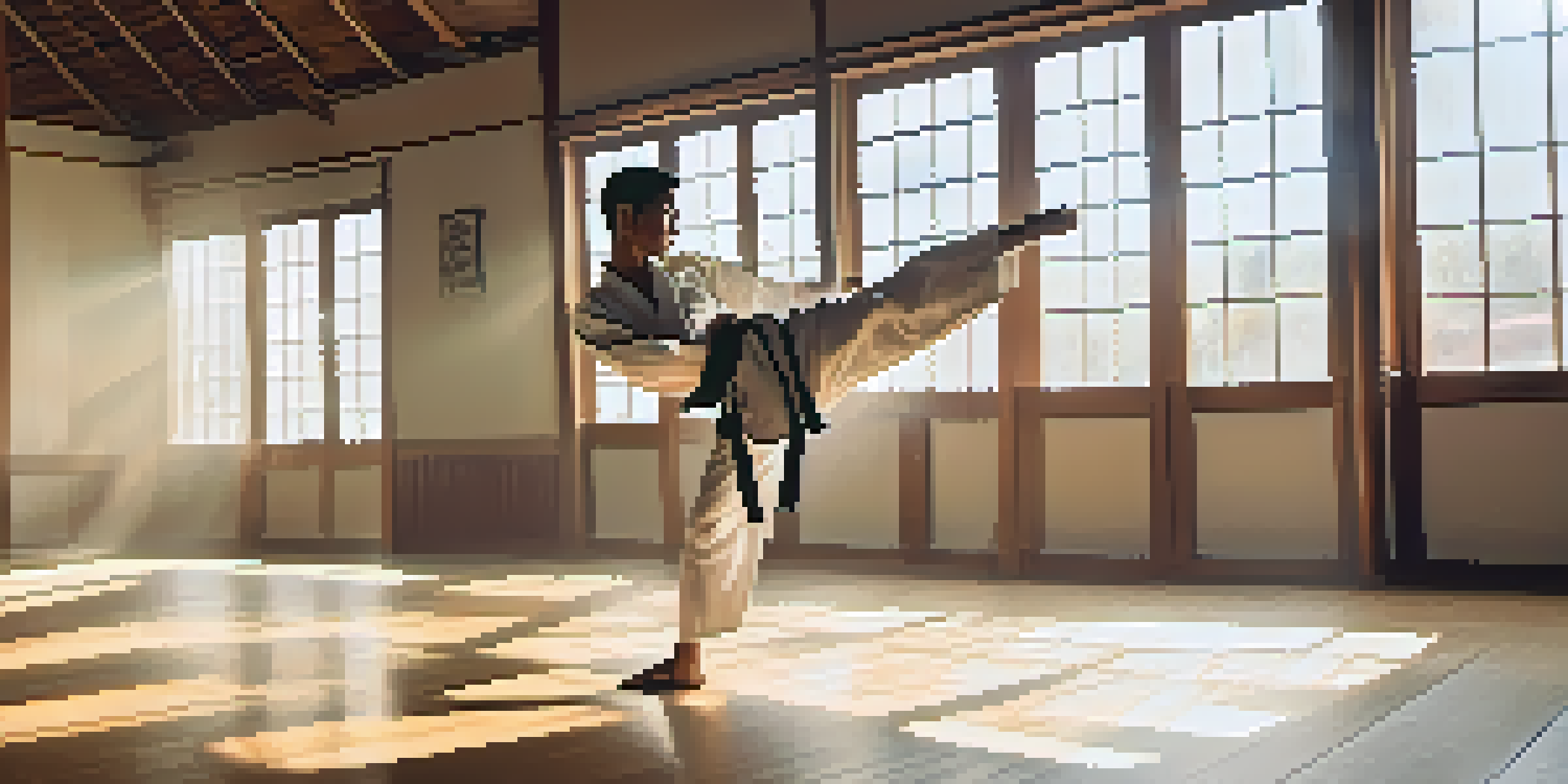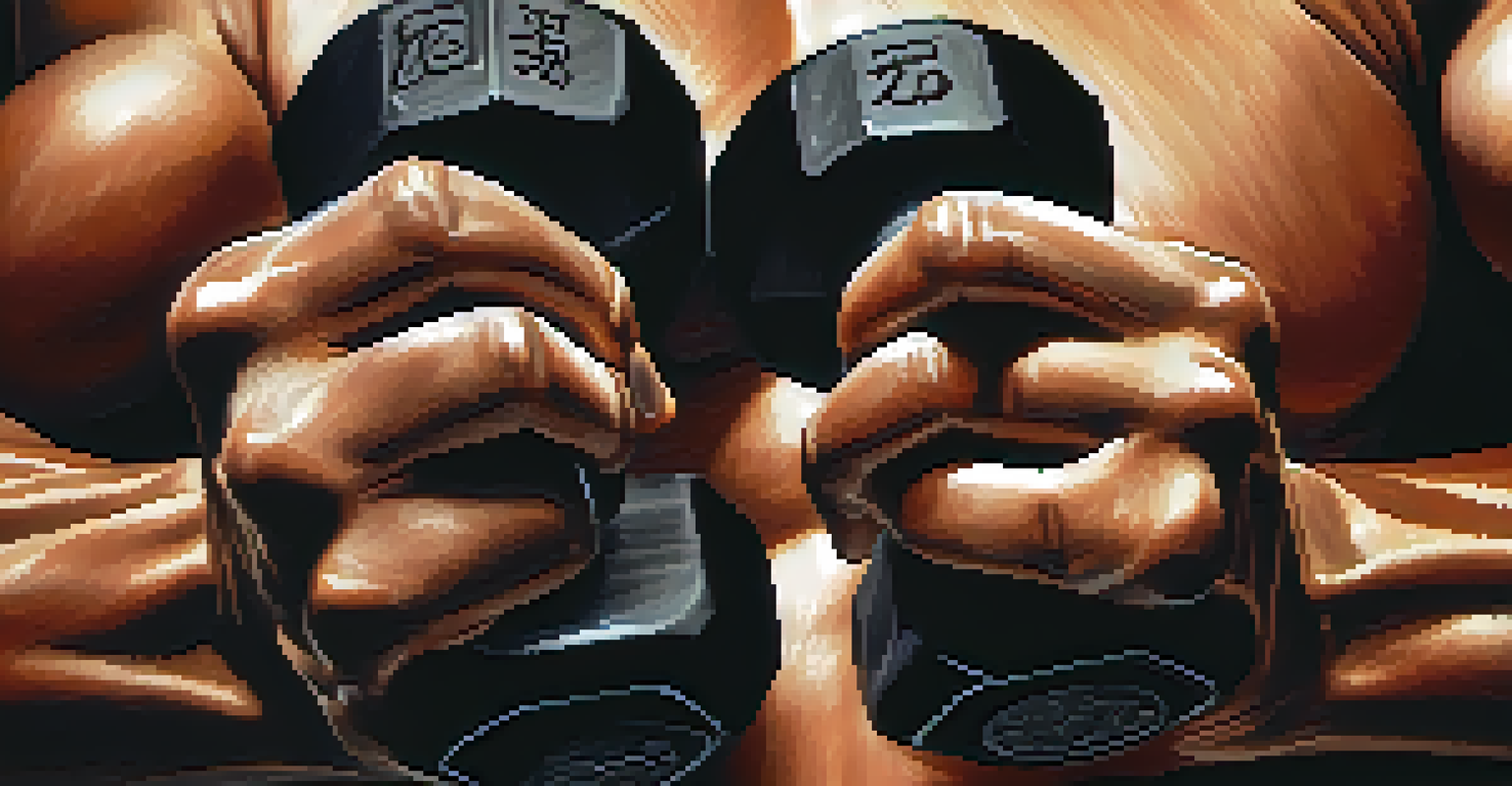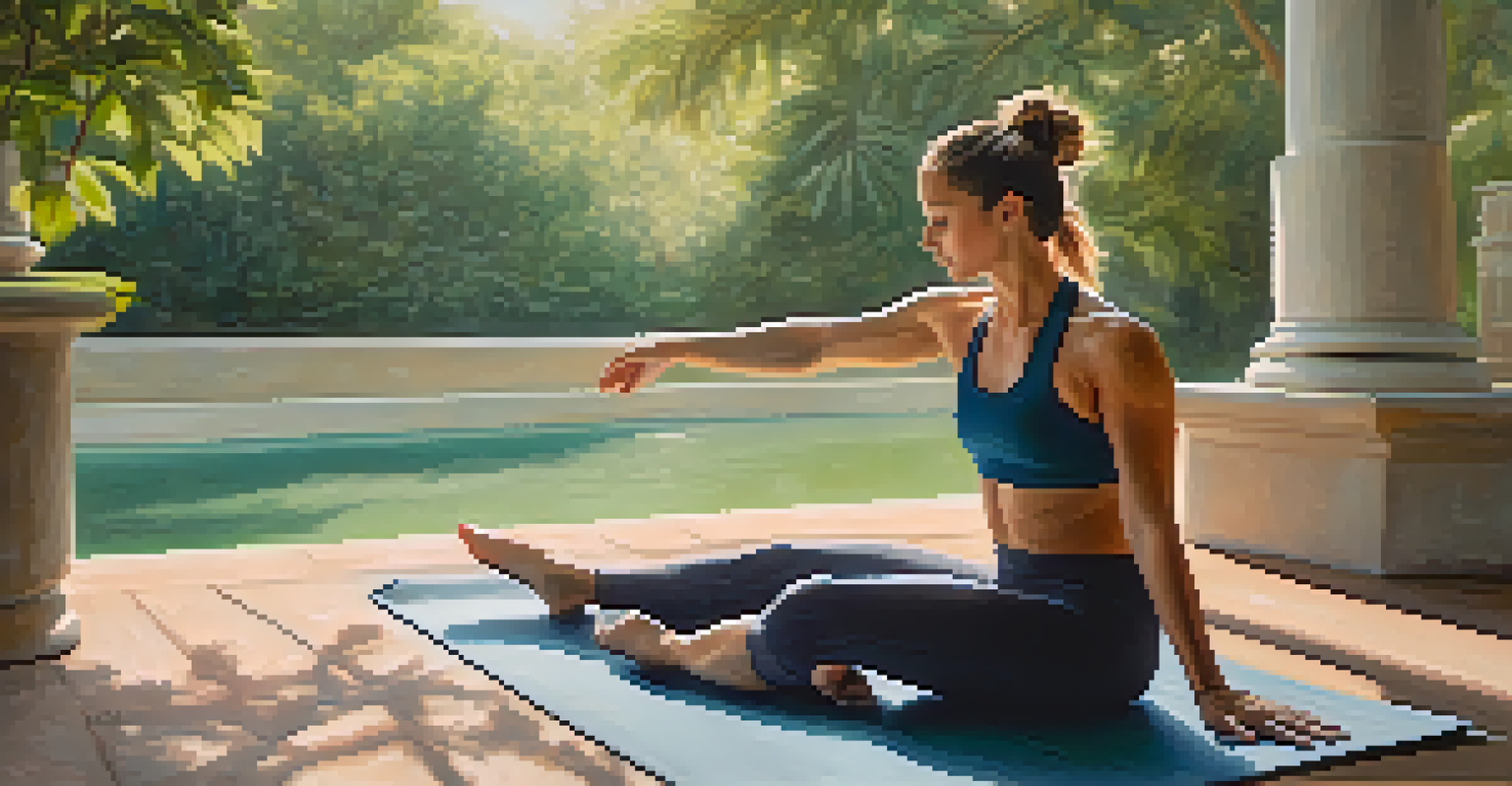Physical Conditioning for Martial Artists: Essential Tips

Understanding the Importance of Conditioning in Martial Arts
Physical conditioning is the backbone of effective martial arts training. It enhances your strength, endurance, and flexibility, which are crucial for executing techniques efficiently. Without proper conditioning, even the most skilled martial artist may struggle to perform at their best.
The more you sweat in training, the less you bleed in battle.
Consider conditioning as the foundation of a sturdy house; if it's weak, everything built on it is at risk. This is particularly true in martial arts, where a solid physical base can prevent injuries and improve overall performance. Conditioning allows you to train harder and recover faster, which is essential in any competitive environment.
More than just a routine, conditioning is a lifestyle choice that can significantly impact your martial arts journey. By prioritizing your physical fitness, you're setting yourself up not only for success in the dojo but also for improved health and well-being outside of it.
Incorporating Strength Training into Your Routine
Strength training is a crucial aspect of conditioning for martial artists. It helps build muscle mass, enhances power, and increases overall body strength. Exercises like squats, deadlifts, and push-ups can directly translate to better performance in martial arts moves.

Think of strength training as sharpening a blade; the more you refine it, the more effective it becomes. This aspect of conditioning not only improves your striking power but also your grappling and defensive capabilities. Plus, the added muscle strength can provide better support for your joints, reducing the risk of injuries.
Conditioning is Essential for Success
Proper physical conditioning enhances strength, endurance, and flexibility, which are crucial for optimal martial arts performance.
To get started, aim for at least two to three strength training sessions per week, focusing on compound movements that engage multiple muscle groups. By integrating these exercises into your routine, you’ll notice a marked improvement in your martial arts skills and overall physical fitness.
Enhancing Endurance for Better Performance
Endurance is the ability to sustain prolonged physical activity, and it's vital for martial artists who often engage in intense drills or sparring sessions. Building endurance allows you to maintain your energy levels throughout training and competitions. This means you can perform techniques more effectively without succumbing to fatigue.
Success is where preparation and opportunity meet.
Imagine running a marathon versus sprinting; the former requires a different kind of stamina. For martial artists, cardiovascular exercises like running, cycling, or swimming can significantly boost endurance. Incorporating interval training can also help mimic the stop-and-go nature of martial arts, improving your ability to recover during bouts.
Aim to include endurance training 2-3 times per week, gradually increasing the duration and intensity. This will not only enhance your performance but also contribute to better recovery times, allowing you to train harder and more frequently.
Flexibility: A Key Component of Martial Arts Conditioning
Flexibility is often overlooked, yet it's an essential component of physical conditioning for martial artists. Improved flexibility enhances your range of motion, allowing you to execute techniques more fluidly and efficiently. This can be particularly beneficial for kicking and grappling, where flexibility plays a crucial role.
Think of flexibility as the oil that keeps a machine running smoothly; without it, movement can be stiff and restricted. Incorporating stretching routines, yoga, or dynamic warm-ups into your training can significantly improve your flexibility. This not only enhances performance but also reduces the risk of injuries.
Nutrition Fuels Performance
A balanced diet rich in essential nutrients supports energy levels and recovery, ultimately improving martial arts skills.
Make it a habit to dedicate time to flexibility training after every workout. Over time, you'll notice improvements in your mobility, which will directly translate to more effective martial arts techniques.
The Role of Nutrition in Conditioning for Martial Artists
Nutrition plays a pivotal role in any conditioning program, particularly for martial artists who require optimal energy levels. A balanced diet rich in whole foods, lean proteins, complex carbohydrates, and healthy fats can fuel your workouts and aid recovery. Nutrition is about providing your body with the right tools to perform at its best.
Consider your body as a high-performance vehicle; it needs quality fuel to run efficiently. Eating the right foods can enhance endurance, strength, and overall performance. Hydration is equally important, as staying well-hydrated can help prevent fatigue and improve physical output.
Aim to plan your meals around your training schedule, ensuring you’re consuming adequate nutrients before and after workouts. By prioritizing nutrition, you’ll not only feel better during training but also see improvements in your martial arts performance.
Rest and Recovery: The Unsung Heroes of Conditioning
Rest and recovery are often overlooked but are critical components of a successful conditioning program. Your body needs time to repair and grow stronger after intense workouts. Skipping recovery can lead to burnout and injuries, ultimately hindering your progress in martial arts.
Think of recovery as charging your phone; without it, your battery runs low, and performance suffers. Incorporating rest days and active recovery activities such as light stretching or yoga can help your body recharge. This balance is essential for sustained improvement and longevity in your martial arts journey.
Rest is Key to Progress
Incorporating rest and recovery into your training routine helps prevent injuries and allows your body to grow stronger.
Listen to your body and don’t hesitate to take a break when needed. By valuing rest as much as training, you’ll not only enhance your performance but also maintain your passion for martial arts over the long term.
Setting Realistic Goals for Your Conditioning Journey
Setting realistic goals is vital for creating an effective conditioning program. Goals provide direction and motivation, allowing you to track progress and celebrate achievements along the way. Whether it’s improving your endurance, building strength, or enhancing flexibility, clear objectives can keep you focused.
Consider breaking down larger goals into smaller, manageable milestones. This approach can help make the process less overwhelming and more achievable. For example, if your aim is to improve your kicking technique, set specific targets for flexibility or strength that contribute to this goal.

Regularly reassess your goals and adjust them based on your progress. By staying adaptable and committed to your conditioning journey, you’ll find it much easier to stay motivated and engaged in your martial arts training.